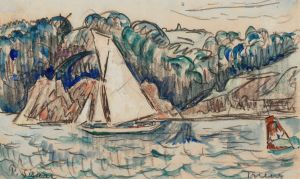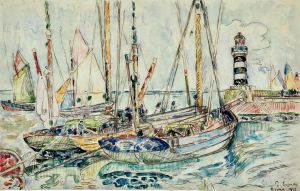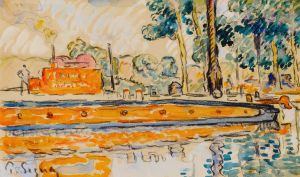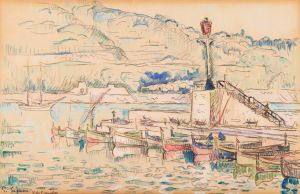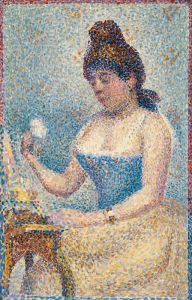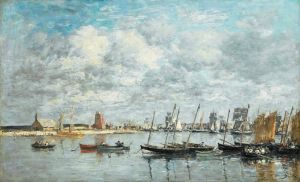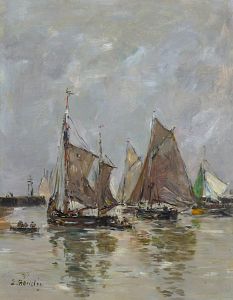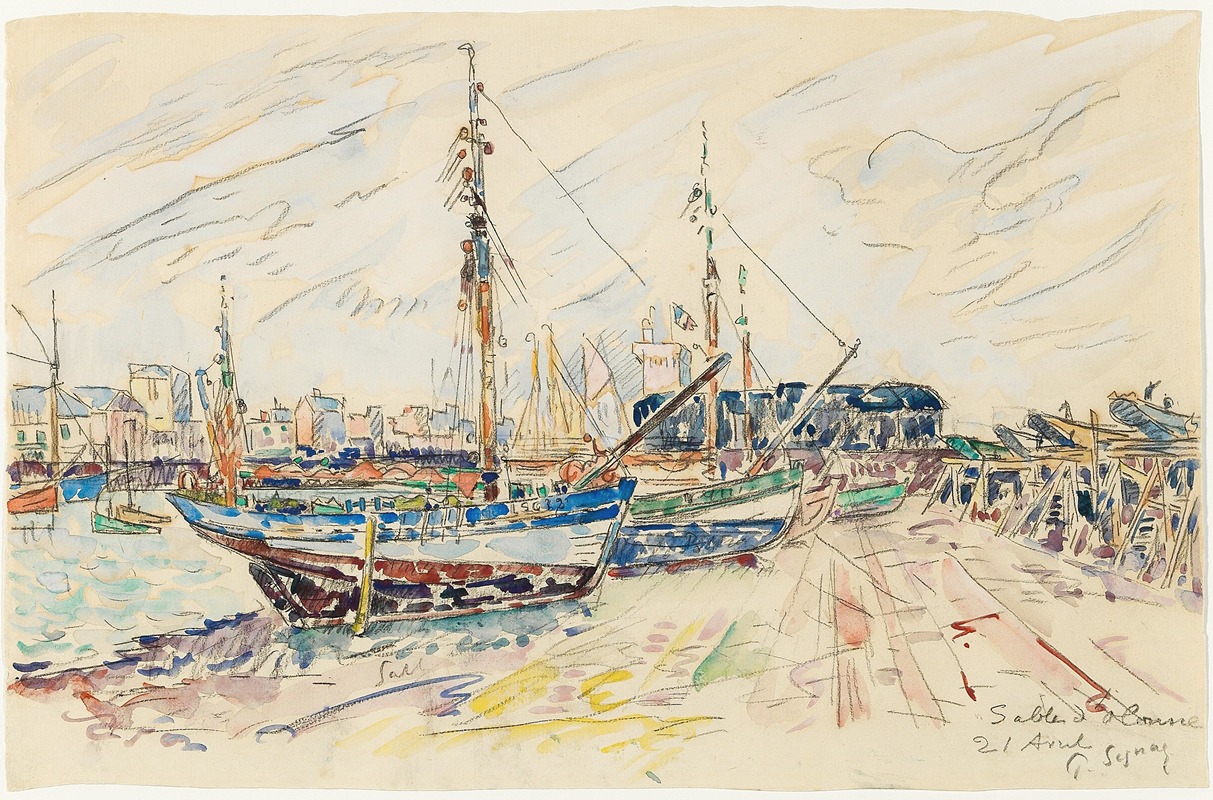
Sables d’Olonne
A hand-painted replica of Paul Signac’s masterpiece Sables d’Olonne, meticulously crafted by professional artists to capture the true essence of the original. Each piece is created with museum-quality canvas and rare mineral pigments, carefully painted by experienced artists with delicate brushstrokes and rich, layered colors to perfectly recreate the texture of the original artwork. Unlike machine-printed reproductions, this hand-painted version brings the painting to life, infused with the artist’s emotions and skill in every stroke. Whether for personal collection or home decoration, it instantly elevates the artistic atmosphere of any space.
Paul Signac's painting "Sables d’Olonne" is a notable work by the French Neo-Impressionist artist, who was a significant figure in the development of the Pointillist technique. Born in Paris in 1863, Signac was initially influenced by the Impressionists, particularly Claude Monet, but later became a leading proponent of Neo-Impressionism alongside Georges Seurat. This movement was characterized by the use of small, distinct dots of color applied in patterns to form an image, a technique known as Pointillism.
"Sables d’Olonne" depicts the coastal town of Les Sables-d'Olonne, located on the western coast of France. This town is known for its picturesque beaches and vibrant maritime activity, which have long attracted artists and tourists alike. Signac was drawn to the area for its natural beauty and the quality of light, which he sought to capture in his work.
The painting exemplifies Signac's mastery of color and light, achieved through the meticulous application of individual dots of paint. This technique allows the colors to blend optically, rather than physically, creating a luminous effect that captures the essence of the scene. Signac's use of vibrant, contrasting colors is a hallmark of his style and reflects his interest in the scientific theories of color and perception that were being explored during his time.
Signac's choice of subject matter in "Sables d’Olonne" reflects his fascination with the sea and the life of coastal towns. Throughout his career, he frequently depicted harbors, boats, and the sea, exploring the interplay of light and water. This painting is no exception, as it captures the dynamic atmosphere of the coastal environment, with its bustling harbor and the ever-changing sky.
The painting is also significant for its contribution to the Neo-Impressionist movement, which sought to bring a more scientific approach to art. By using Pointillism, Signac and his contemporaries aimed to achieve a greater vibrancy and luminosity in their work, challenging traditional methods of blending colors on the palette. This approach was inspired by contemporary scientific theories about color and optics, particularly the work of chemist Michel Eugène Chevreul and physicist Ogden Rood.
"Sables d’Olonne" is an important example of Signac's work during a period when he was refining his Pointillist technique and exploring new themes and compositions. It stands as a testament to his skill as a colorist and his ability to convey the atmosphere and light of a specific location. Today, Signac's work, including "Sables d’Olonne," is celebrated for its innovative approach to color and its influence on subsequent generations of artists.
The painting is housed in various collections and continues to be studied and admired for its artistic and historical significance. Signac's legacy as a pioneer of Neo-Impressionism endures, and "Sables d’Olonne" remains a key work in understanding the development of modern art in the late 19th and early 20th centuries.







